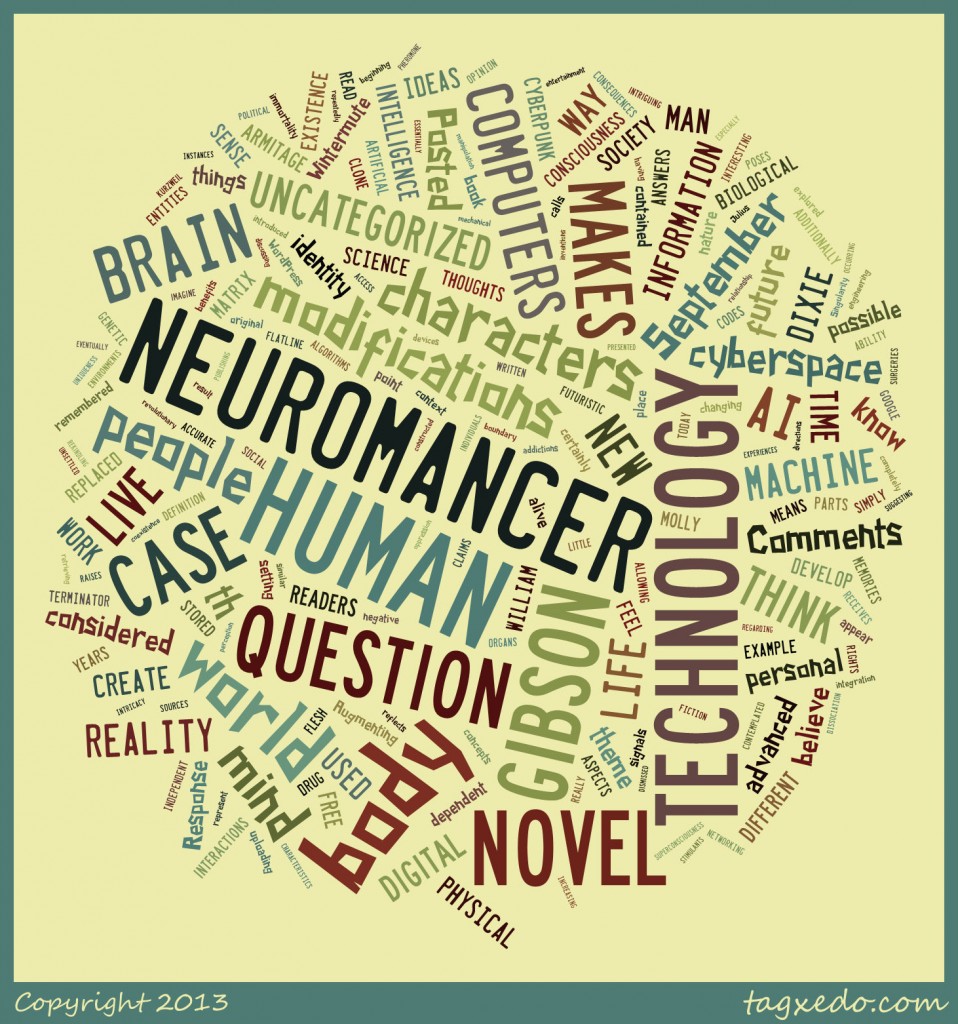Today, majority of the major operations that occur daily whether in the stock market, newsroom, hospital room, and even the classroom, are being aided or often run by technology and computers. Just as Donna Haraway predicted in her “Cyborg Manifesto,” technology has wedged itself into almost all daily activities in today’s society and has led to the formation of what I believe are two kinds of Cyborgs: people physically connected to machines and technology and those mentally attached to their devices.
The novel Neuromancer by William Gibson delves into this topic of “cyborgism” along with the harmony and often dissonance between man and machine. It poses many theoretical questions that are becoming more and more pertinent today, as the gap between human and machine grows smaller. It poses questions like: what defines something or someone is human? Or regarding how the body and mind is split, especially when technology is engrained directly into the body. One of the biggest questions that has arisen from this novel is whether a new being can be created, whether human, cyborg, or something else and the implications of this. In the novel, this can be seen everywhere and in everyone. A prime example can be seen with Molly, who through extensive surgeries has acquired prosthetics, fingernail implants, and mental switches that render her a ‘super-ninja’ assassin. Is Molly classified as a human? A cyborg? Another character, Julius, also has extensive surgeries done to him, which switch out his DNA and allow him to continue living way past the age of 150. The same can be seen, in a less obvious manner, with Case who through surgeries has obtained new drug resistant organs, along with the ability to zap into cyberspace and a virtual matrix.
All of these technological enhancements or changes to the human body is part of a societal stigma Gibson predicted, in which people would become ‘technologically addicted’ and continue to transform and alter their bodies with technology. Although it may seem crazy for someone to undergo some of the surgeries found in the novel, delving deeper into today’s society elucidates that Gibson may not have been to far off in his prediction. Today, mentally people have become more and more engrained with technology, with micro computers (smartphones) at their side at all times. It may not be a full out addiction, but there are noticeable mental effects that occur from being away from technology that can often be seen as symptomatic for an addiction. Gibson’s theory of completely altering the human body with technology also holds true today with the advent of 3-D printing, especially in the medical field. Today, and definitely in the next decade, scientists will be able to print out fully functional human organs and transplant them into people, just as Case had pancreas and liver transplants. With this advent, along with the computer mapping of the human brain, who is to say a new breed of human, cyborg, or new species can’t be created. The implications of this have very serious consequences on society in all aspects from politics to ethics. Maybe Gibson’s dystopian society wasn’t that far off after all.


